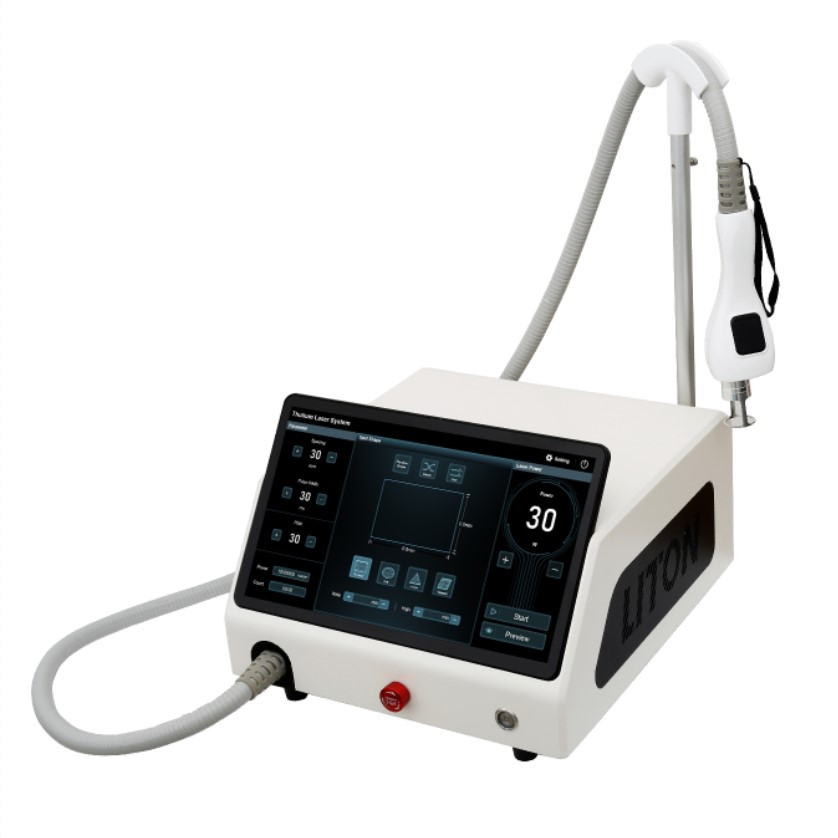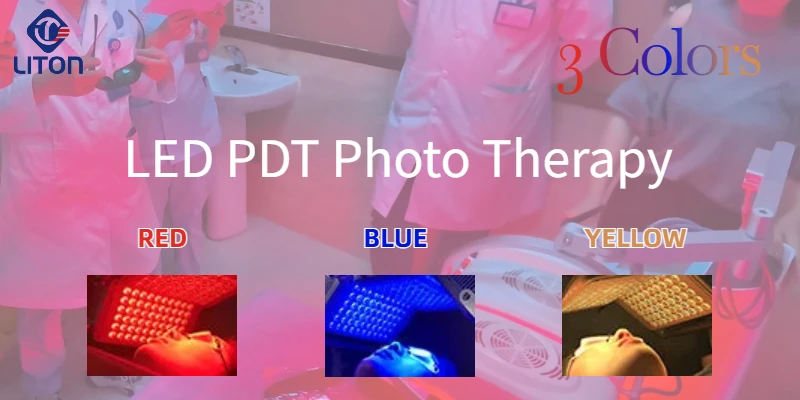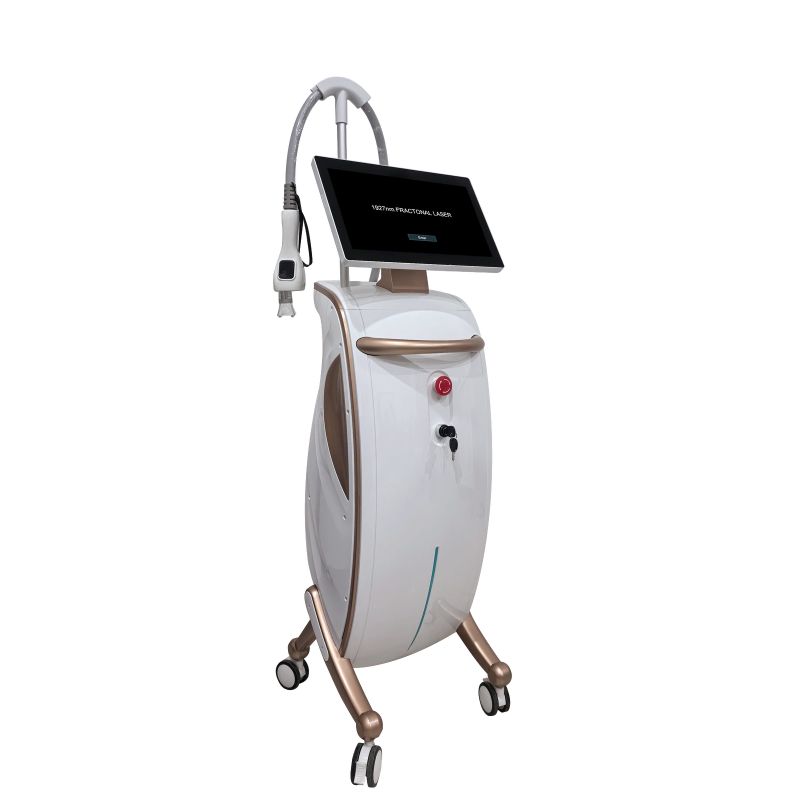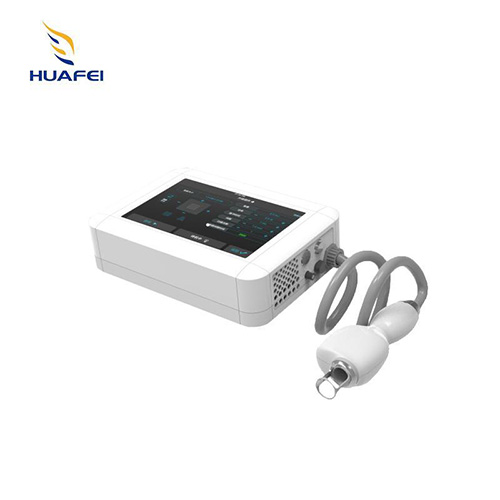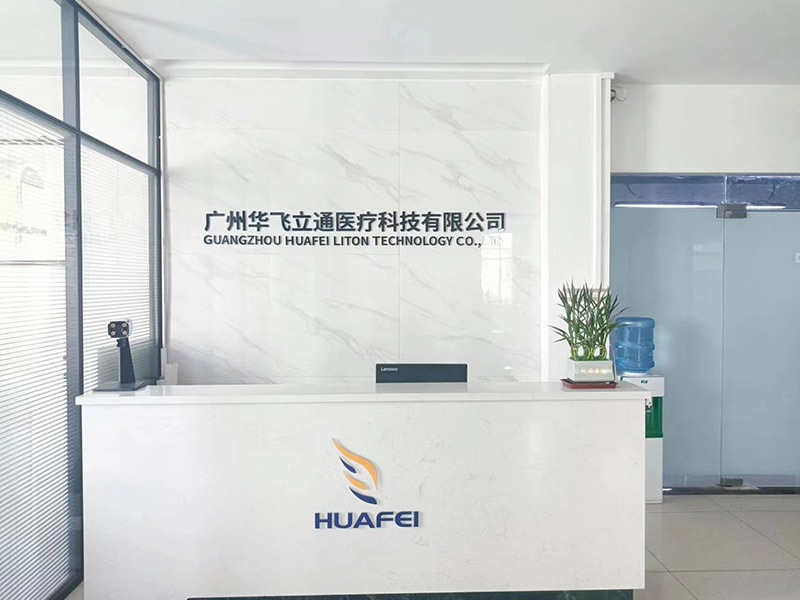Introduction
As we age, the collagen in our skin is continuously lost, and the dermis becomes thinner, leading to wrinkles.
Dynamic wrinkles are mainly caused by muscle movement, such as forehead wrinkles, crow’s feet, and nasolabial folds. These may require treatment with fillers or surgery.
Static facial wrinkles are linear lines that appear on the skin’s surface when the face is expressionless and looking straight ahead. They most commonly appear between the eyebrows, around the eyes, around the mouth, in front of the ears, on the forehead, and cheeks. Static facial wrinkles are one of the earliest signs of facial skin aging.
This article will analyze the specific methods and guide for non-ablative fractional laser treatment and improvement of static facial wrinkles.
Causes and Types of Static Facial Wrinkles
As we age, the amount of collagen and elastin in our skin gradually decreases, causing it to lose elasticity and firmness, resulting in fine lines. Several risk factors that are difficult for modern people to avoid, such as ultraviolet radiation, environmental pollution, and unhealthy lifestyle habits (such as smoking and staying up late), further exacerbate static wrinkles.
Related research indicates that the causes of facial static fine lines can be divided into internal factors (i.e., natural aging) and external factors (mainly photoaging, as well as smoking and environmental toxins). Furthermore, genetic studies have found differences in the timing and location of the appearance of facial static wrinkles among different ethnic groups.
Studies have shown that Chinese women develop facial static wrinkles 10 years later than French women. Besides differences between Eurasian populations, there is also diversity in distribution among Asian populations; for example, Chinese women have more severe static fine lines around the eyes than Japanese women, while Thai women have more pronounced static fine lines on the lower face than Chinese women.
Facial static fine lines can be diagnosed based on clinical manifestations. Their shape is generally linear, and their direction may be horizontal, vertical, or crisscrossing.
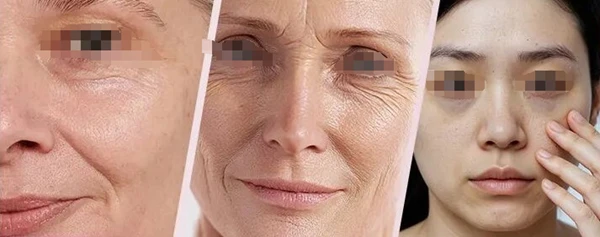
Facial static wrinkles are commonly classified into:
- Atrophic static wrinkles: These disappear when the skin is stretched, mainly due to extracellular matrix atrophy.
- Elastic static wrinkles: These do not disappear when the skin is stretched; photoaging is the main contributing factor.
- Expression-related static wrinkles: These develop from dynamic wrinkles and are related to repeated contractions of subcutaneous muscles.
- Gravity-related static wrinkles: These form due to sagging skin, mainly due to gravity and decreased skin elasticity.
The Theory of Laser Treatment for Wrinkles
Laser wrinkle removal generally refers to using photon and laser technologies to improve wrinkles and achieve other skin rejuvenation effects. It primarily works by stimulating collagen production through photothermal effects, filling in wrinkles caused by collagen loss, and simultaneously heating the dermal layer to stimulate tissue regeneration and reconstruction, thickening the dermis and achieving wrinkle reduction and skin tightening.
According to current clinical research results and mainstream market feedback, non-ablative fractional lasers (wavelengths 1540, 1550, 1565, 1927nm), ablative fractional CO2 lasers, long-pulse 1064nm lasers, and microneedle fractional radiofrequency are particularly effective. Among these, the 10600nm ablative CO2 fractional laser shows more significant results in improving static facial wrinkles than the 2940nm Er:YAG ablative fractional laser, but it also has a higher incidence of adverse reactions.
However, ablative laser treatments have a very long treatment cycle, which does not meet the current treatment needs of patients in the market. Non-ablative fractional laser treatments offer short downtime and simple recovery, making them a viable first-line option.
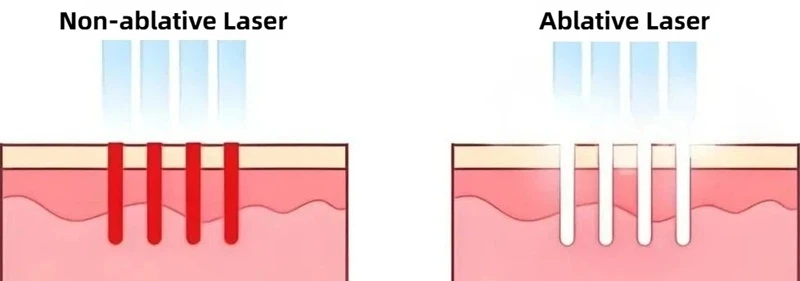
The core principle of non-ablative fractional lasers lies in “fractional photothermal action” and “selective damage.” Unlike traditional ablative lasers (such as CO2 lasers), non-ablative fractional lasers utilize specific wavelengths (such as 1440nm, 1540nm, 1550nm, and 1927nm) that precisely penetrate the outermost layer of the epidermis with minimal vaporization damage. The laser energy is preferentially absorbed by the moisture and collagen in the dermis, creating a series of micro-thermal damage zones in the mid-dermis. In short, this technology initiates a controlled, localized damage repair mechanism within the dermis without compromising the integrity of the epidermis.
With its advantages of rapid recovery, low risk of pigmentation, deep tissue remodeling, and broad applicability, non-ablative fractional lasers are increasingly used in the current cosmetic market for the treatment of static wrinkles.
Non-ablative Laser Treatment Parameter
The endpoint response to non-ablative fractional laser treatment for static facial wrinkles is fine erythema and mild edema of the skin.
- 1550nm Erbium Glass Laser (Fraxel Re:Store, Solta, USA): 230 MTZ/cm², 70 mJ energy, 3 treatments per 4 weeks.
- 1565nm Erbium Fiber Laser (M22, Lumenis, USA, ResurFX handpiece): 18-50 mJ pulse energy, 200-500 microbeams/cm², spot shape determined by the treatment area, one scan, 3 treatments per 4-5 weeks.
- 1927nm Thulium Laser (Lavieen, Wontech, South Korea): 20 mJ energy, 4 ms pulse width, 5 W power, one scan, spot shape determined by the treatment area, 3 treatments per 2 months.
- 1927/1550nm Thulium-Erbium Laser (Liton Laser, China): The 1927nm Thulium laser has a pulse width of 3-4ms and a power of 5W-8W. The 1550nm Erbium laser has a pulse width of 6-10ms and a power range of 5-7W.

Thulium-Erbium Laser Treatment for Facial Wrinkles
Liton Laser’s research found that combined treatment with 1927nm thulium laser and 1550nm erbium laser yielded good results for treating static facial wrinkles.
Dr. Hong, a laser training professor at Liton Laser, personally verified the wrinkle treatment effects of thulium-erbium laser. Dr. Hong had numerous fine lines around his ear. He first treated the area with a 1550nm erbium laser (6ms pulse width and 6W power), followed by a 1297nm thulium laser (3ms pulse width and 5W power).
Good results can be achieved with just one treatment session and four days of treatment, as shown in the image below:

Before and after photos of facial wrinkle treatment using thulium-erbium dual lasers. We can see that before treatment, Professor Hong had very noticeable wrinkles around his ears, with multiple fine lines. After treatment, Professor Hong’s wrinkles in the same area around his ear were significantly reduced, and the effect was very obvious.
Post-Laser Treatment Care
1. Skin Care
Stabilized wrinkles often appear in areas like around the eyes where the skin is thin. Post-treatment, it’s crucial to focus on moisturizing and repairing to accelerate skin barrier recovery.
2. Sun Protection
UV rays not only accelerate skin aging but also cause pigmentation problems. After laser treatment, choose between physical and chemical sunscreens depending on your skin’s water-avoidance requirements.
3. Ensure Sufficient Sleep
A healthy lifestyle, including sufficient sleep, a balanced diet, and moderate exercise, helps maintain healthy skin, preserve treatment effectiveness, and delay the appearance of new wrinkles.
Non-ablative Fractional Laser Equipment
Among the many non-ablative fractional lasers, Liton Laser recommends the 1550nm erbium laser and the 1927nm thulium laser. The 1927nm wavelength has a high water absorption rate and relatively shallow penetration, targeting superficial skin pigmentation issues, promoting pigment metabolism, and brightening and evening out skin tone. The 1550nm wavelength penetrates deeply, targeting deeper skin problems such as fine lines and pores, improving skin texture. This dual-wavelength approach provides treatment solutions for different skin layers. Its roller-type laser emission method helps ensure more even treatment coverage.
The combined use of erbium laser and thulium laser can resolve most skin lesions, and has very good treatment results for melasma, acne, and anti-aging wrinkles. Usually, only one treatment session is needed to obtain obvious before and after photos.
Liton Laser sells world-leading fractional thulium-erbium dual laser. If you need more information about this high-quality beauty device, please see More: Fractional Thulium-Erbium Dual Laser for Sale.
Frequently Asked Questions
Q1: What are the types of non-ablative fractional lasers?
Non-ablative lasers include 1550nm lasers, 1565nm lasers, 1927nm lasers, and pico 1064nm fractional lasers.
Q2: What is non-ablative fractional laser?
Non-ablative fractional lasers refer to a type of laser that does not cause epidermal abrasion when applied to skin tissue and emits light in a fractional pattern. It stimulates collagen proliferation and remodeling by creating tiny thermal damage zones in the dermis and epidermis. Compared to ablative fractional lasers, its single-session therapeutic effect is slightly weaker, but its non-breaking nature allows for faster wound healing, with an average recovery period of about 3-7 days. Some patients may experience pigmentation or other complications, requiring careful follow-up care as prescribed by their doctor.
Q3: How effective is non-ablative fractional laser treatment for facial wrinkles?
Based on Liton Laser’s experience and testing, if a combination of 1550nm erbium laser and 1927nm thulium laser (non-ablative fractional laser) is used for treatment, only 1 session is needed, and good treatment results can be seen in about 4 days.
Conclusion
Treatment outcomes vary depending on the chosen technique and are subject to individual heterogeneity. Laser treatments offer the advantage of versatility and the ability to be combined, catering to different skin types and individual patient needs. Non-ablative fractional laser treatments have a short recovery period and are often the first choice for treating static facial fine lines.
In clinical applications, different wavelengths and energies can be used for single or multi-wavelength treatments, combining ablative and non-ablative techniques. It is crucial to carefully control the energy levels to avoid adverse reactions such as erythema and pigmentation.
Liton Laser recommends the combined use of 1927nm thulium and 1550nm erbium lasers for non-ablative treatment of facial wrinkles, offering advantages such as being non-invasive and requiring fewer treatment sessions.

